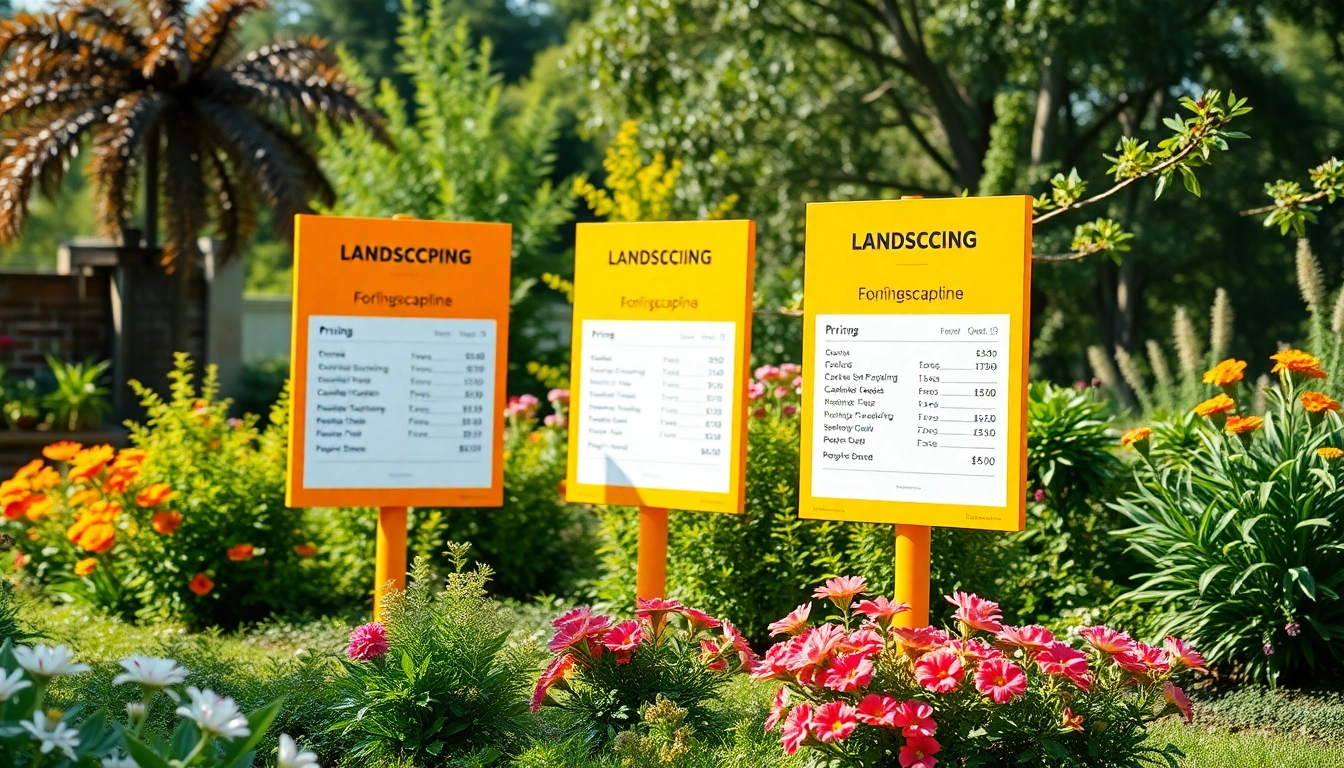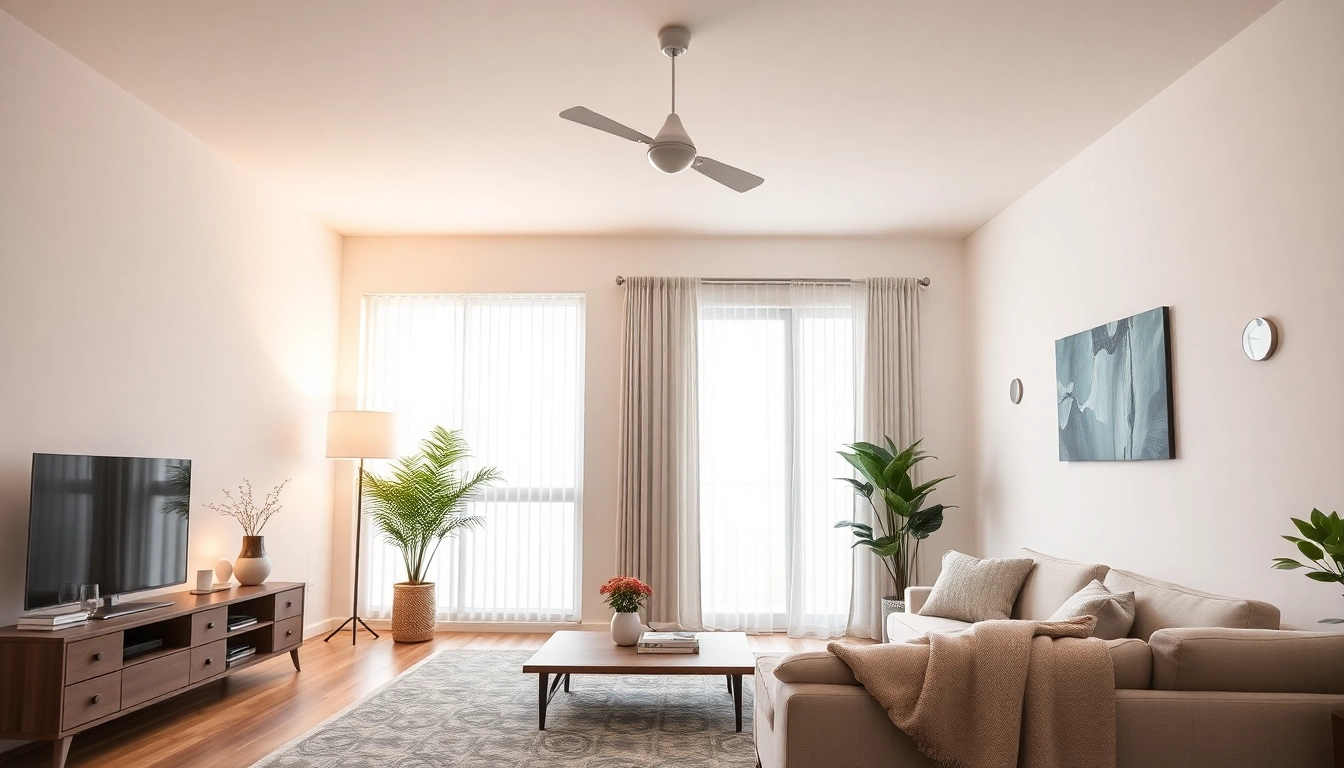Understanding Landscaping Company Pricing
When it comes to planning your outdoor space, landscaping company pricing can significantly determine how your vision unfolds. From lavish garden designs to simple maintenance, understanding the intricacies of pricing in the landscaping sector is crucial. In this guide, we will delve into the multifaceted world of landscaping pricing, breaking down components that affect costs and providing you with the knowledge to make informed decisions.
Factors Influencing Pricing
Several factors contribute to how landscaping companies set their prices. These can vary widely depending on location, the complexity of the project, the materials used, and the level of expertise required.
- Location: Areas with higher living costs typically see higher service prices. Urban centers often charge more than rural settings due to increased demand and operational costs.
- Project Scope: Larger or more complex projects necessitate more planning, labor, and materials—consequently increasing the price.
- Materials Used: Quality and type of materials can drastically influence cost. Premium products, such as natural stones, can be more expensive than synthetic alternatives.
- Labor Costs: Highly skilled labor can lead to higher costs. When hiring professionals, experience and specialized skills can also affect pricing.
- Seasonal Factors: Demand may fluctuate based on the season, impacting the availability and pricing of landscaping services. Peak seasons may drive prices up.
Common Pricing Models Used by Landscaping Companies
Landscaping companies often adopt various pricing models to cater to different types of clientele and projects:
- Hourly Rate: Some companies charge based on the time taken to complete a project. This model is ideal for smaller jobs or maintenance tasks.
- Flat Rate: For comprehensive projects, a flat rate can be charged that encompasses the entire service, materials included. This is often preferred for clarity in budgeting.
- Per Square Foot: Many companies charge based on the area being landscaped—common for sod installations, paving, and hardscape features.
- Package Pricing: Some businesses offer bundled services at a discounted rate, which can be cost-effective for customers looking for multiple services.
Getting an Accurate Estimate
Obtaining an accurate estimate is crucial for planning your landscaping budget effectively. Here are practical steps to consider:
- Initial Consultation: Schedule a meeting with potential companies to discuss your vision. Be clear about your needs and expectations.
- Site Evaluation: An on-site assessment allows the landscaper to identify specific issues, measure the area, and discuss the scope of work required.
- Detailed Quotes: Request written estimates that include a breakdown of labor, materials, and any additional costs. This transparency helps in comparing prices across different services.
- Clarify Scope Changes: Ensure you understand how adjustments to the project may affect the initial estimate, as changes often lead to increased costs.
Breaking Down Landscaping Service Costs
To gain a better understanding of landscaping pricing, it’s crucial to break down the costs associated with various services. Each aspect of landscaping—from design to maintenance—carries its own price tag.
Design and Planning Costs
The foundation of any landscaping project often begins with strong planning and design. This includes:
- Consultation Fees: Initial consultations can vary from free to several hundred dollars, depending on the landscaper’s experience and location.
- Design Fees: Professionals typically charge a flat fee or hourly rate for creating design plans. Complexity influences this cost; intricate designs require more time and expertise.
- Site Analysis: Assessments that consider soil quality, sun exposure, and existing plant life may incur additional costs but are invaluable for optimal design.
Installation Costs for Various Features
Installation prices can vary significantly based on the features you choose to enhance your landscape:
- Hardscape Installation: Features like patios, walkways, and stone walls typically carry higher upfront costs due to materials and labor intensity.
- Plant Installation: The cost of trees, shrubs, and other plants can vary depending on species, size, and overall health, making nursery selection crucial.
- Irrigation Systems: Installation of irrigation systems, whether manual or automatic, requires additional labor and materials, impacting overall installation costs.
- Lighting and Electrical: Outdoor lighting installations—while enhancing aesthetic appeal—require qualified electricians, elevating overall costs.
Maintenance Costs and Contracts
Maintaining your landscape involves ongoing costs that can be predictable through maintenance contracts:
- Service Frequency: Regular mowing, trimming, and weeding can typically be scheduled based on your budgets and preferences, affecting overall costs.
- Seasonal Services: Seasonal maintenance tasks, such as snow removal or leaf cleanup, should be anticipated in your budgeting.
- Long-term Contracts: Many companies offer discounts for customers who sign long-term maintenance contracts, providing a balance between service consistency and cost management.
Comparing Pricing Among Landscaping Companies
To ensure you’re making the best choice when selecting a landscaping company, it’s essential to compare pricing and understand what you’re truly getting for your money.
How to Evaluate Competitor Quotes
Getting multiple quotes is an effective strategy for assessing value:
- Compare Apples to Apples: Ensure you’re comparing similar services and project scopes across quotes. A significant variance in pricing often comes from differing service levels.
- Check Inclusions: Look beyond the base price. Some quotes may include additional services or higher-quality materials that justify a higher price.
- Read Reviews: Examine customer feedback about past projects. A lower price might not equate to better value if the service quality is lacking.
Understanding Value vs. Cost
Price is often the first factor to consider, but value is equally important. When determining the value you receive:
- Quality Materials: Investing in quality materials can lead to lower long-term costs due to durability and decreased maintenance needs.
- Expertise and Reputation: Companies with strong reputations and skilled professionals may command higher prices but often deliver superior results.
- Long-term Results: Consider the longevity of plants and materials. Opting for cheaper solutions might lead to higher costs in the long run if they require frequent replacement.
Case Studies of Pricing Effectiveness
Examining case studies can help you understand how pricing can reflect service effectiveness:
- Residential Landscape Design: A client in a suburban area spent $5,000 on a landscape overhaul that included hardscaping and plant installation. The attention to drainage and site planning allowed for a high-quality finish, reducing runoff and enhancing aesthetics significantly.
- Commercial Property Maintenance: A local business owner opted for a seasonal contract costing $2,000 per season. Regular care not only elevated the overall appearance but also contributed to increased client traffic—demonstrating value beyond simple maintenance.
Negotiating Landscaping Pricing
Negotiation can be a key component when discussing pricing with landscaping companies. Here are some effective strategies to ensure you get the best deal possible:
Tips for Successful Negotiation
When it comes to negotiating landscaping pricing, consider the following:
- Be Transparent: Share your budget upfront. A clear budget can guide the landscaper in suggesting appropriate options or scaling down services.
- Ask for Discounts: Don’t hesitate to inquire about available discounts, particularly for early bookings or bundled services.
- Be Flexible: If you can adjust your timeline or project scope, this might allow for negotiation opportunities during off-peak seasons.
What to Ask Before Committing
Before finalizing a deal, certain questions can clarify expectations:
- What is included in the estimate? Ensuring clarity around inclusions helps in avoiding surprise costs down the line.
- How do you handle unforeseen issues? Understanding how contractors handle unexpected challenges can help you assess their professionalism and reliability.
- What is the expected timeline for completion? Having clear timelines helps in setting expectations for both parties.
Recognizing Red Flags in Pricing
Being aware of potential red flags can save you from hidden costs and poor service:
- Unusually Low Quotes: Prices that are significantly lower than the competition might indicate poor quality or inadequate service.
- Lack of Transparency: If a contractor is unwilling to provide a detailed quote or clarify costs, it may be a sign of hidden fees.
- Negative Reviews: Consistent complaints about pricing practices should not be ignored; they can indicate long-term issues with the contractor.
Calculating Your Landscaping Budget
Developing a practical landscaping budget is essential to ensure your vision aligns with your financial capabilities. Here are approaches to help you create and manage your budget effectively:
Creating a Realistic Budget
A realistic budget takes into account all potential expenses, including:
- Assess Initial Costs: Determine the budget for design, materials, and labor based on your research of local prices.
- Allocate for Maintenance: Set aside funds for ongoing maintenance, ensuring your landscape remains healthy and attractive.
- Contingency Funds: Allocate a portion of your budget for unforeseen expenses (typically 10-20% of total costs).
Prioritizing Landscaping Needs vs. Wants
Balancing needs against wants can help streamline your budget:
- Identify Essential Features: Focus on elements that significantly enhance usability, such as pathways or privacy screens.
- Determine Aesthetic Upgrades: Rank aesthetic desires like exotic plants or decorative features according to importance, allowing for phased implementation over time.
Tools for Budget Tracking and Management
Using budget management tools can assist in tracking your landscaping expenses:
- Spreadsheets: Creating a detailed spreadsheet can help you document all expenses and updated quotes effectively.
- Financial Apps: Various apps are designed to help track budgeting and spending, providing financial insights at your fingertips.
- Consult A Financial Advisor: If your project budget is significant, consulting someone with financial expertise can provide an additional layer of planning and foresight.


